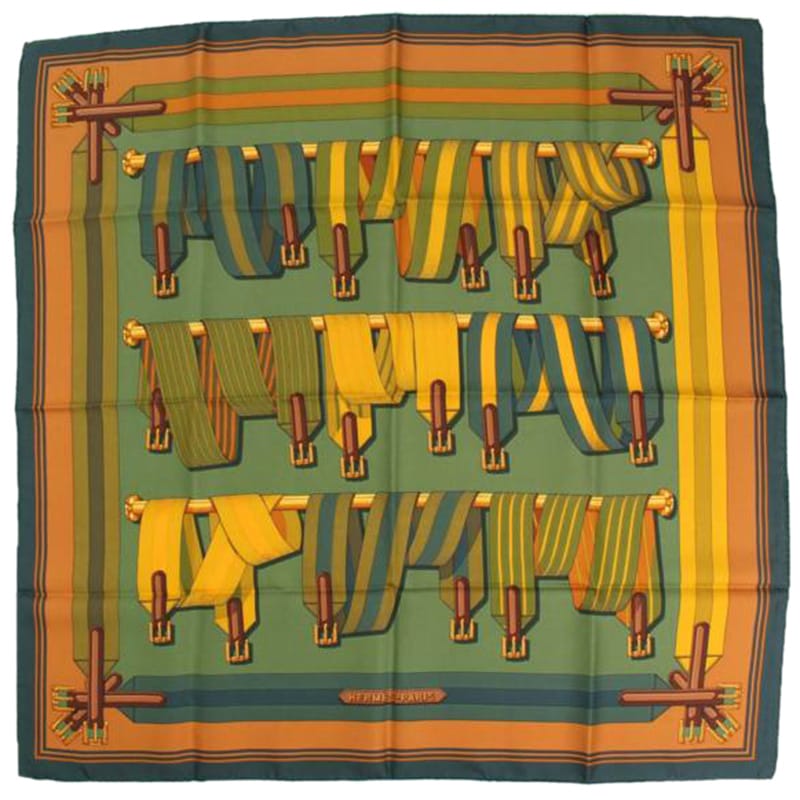
When 20-year old Thierry Hermès left his native village in Krefeld, Germany for Pont Audemer near Paris, France, he couldn’t have known that a century later, his name would become a coveted fashion brand. Mastering the art of tooling leather, Hermès set up a workshop on the rue de Remperts, Paris in 1837. From this atelier, he rode up the ladder of success with impeccable saddlery and equestrian accessories. First, the French, then aristocracy from all over Europe, Russia, Asia and North Africa were his clients for horse harness and saddles.
In 1880, Thierry Hermès’ son Charles-Emile moved the workshop to the now iconic address 24, Rue du Faubourg Saint-Honoré. At the turn of the century, with the advent of the motor car, the second and third generation Hermès decided to diversify into making luggage. This was the first step towards making bags. The first Hermès bag made in 1900, the ‘Haut a Courroies’, was designed to carry saddles. In 1922, Charles’ son Emile-Maurice created the ‘Sac a Depeche’. At that time Hermès held exclusive rights for use of the zip and had crafted the first ever zippered leather jacket for the Duke of Windsor in 1918. The brand then ventured into clothes, bringing out the 90×90 cm silk scarf (1928) inspired by Napoleon’s soldiers and women’s clothing (1929).
The fourth generation of Hermès lead by Emile-Maurice’s sons-in-law (Robert Dumas and Jean-Renee Guerrand) focussed on retail growth. Suffixing the Hermès name to their own, they are credited with introducing the Hermès tie, Hermès watches, perfumes and the iconic Hermès Birkin bag in 1979. The fifth generation of the Hermès family under Jean-Louis Dumas Hermès expanded the flagship store at the Rue du Saint-Honoré and shifted the atelier to Pantin outside Paris. Today, the sixth generation of France’s highest grossing family business and global fashion house caters to more than 250 retail outlets, half of which are owned by the House of Hermès.
The Hermès look

Famous personalities from Queen Elizabeth II to Elle McPherson and Julianne Moore have favored Hermès bags, Hermès scarf, jewellery, and perfumes. In fact, Grace Kelly appeared on the cover of Life magazine holding a large ‘Sac a Depeche’ Hermès to hide her pregnancy from the paparazzi and women flocked to buy ‘the Hermès Kelly bag’. And so the ‘Sac a Depeche’ was rechristened the Hermès Kelly bag in 1956. The Hermès Birkin bag was created for the English singer and actor Jane Birkin. Apparently, when on a flight, Dumas witnessed the trouble Birkin experienced when attempting to keep her straw handbag in the overhead compartment. He offered to design a bag for her which led to the creation of the iconic trapezoid Birkin handbag.
Why buy Hermès?

Beyond the hype of being the favoured brand of fashion moguls, the best reason to invest in a Hermès is that every piece is hand-crafted, hand-printed or hand-stitched by a single artisan. Although time-consuming, this ensures the product is sturdy to last for generations and making an exact duplicate is impossible. Hermès also has a policy of destroying defective pieces before they leave the atelier. Stringent quality control measures include sourcing raw materials like leather directly from countries across the globe. Since 1937, Hermès scarves are woven from silk obtained from mulberry moth cocoons cultivated on company property in Lyon, France.
Such exclusivity extends the waiting time and pushes the price of Hermès women’s handbags upwards of 6,000 USD, a scarf 320 USD and a tie 145 USD. Company-owned stores offer the best price, with most others cashing in on the name for profit. Another option is to buy Hermès from online portals which sell genuine items at discounted prices, such as our.
Hermès is an institution. The original flagship store located at 24, Rue du Faubourg Saint-Honoré houses a museum that includes a collection of tools that the ‘grandfather of our grandfather’ used. The brand was built by the master’s hands working the needles and waxen thread on the humble saddle stitch to ensure perfection in design. How appropriate, then, that the Hermès logo adopted in 1945 is the horse and carriage.
